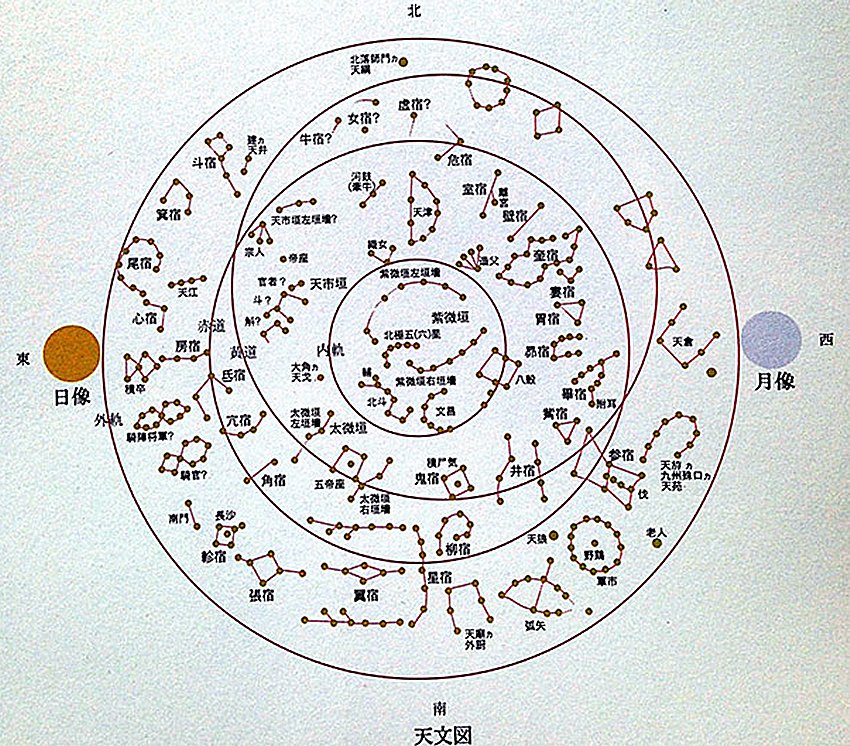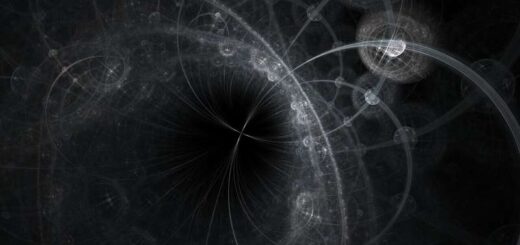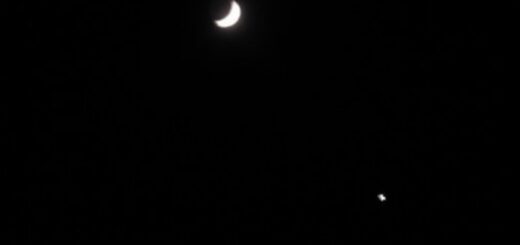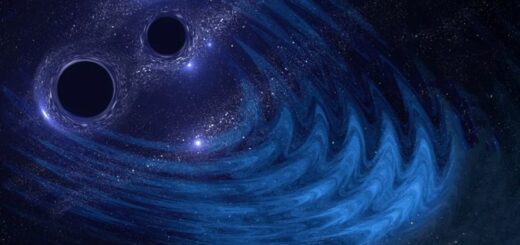Secrets Of Constellations Depicted In Kitora Tomb In Asuka, Nara, Japan
The Kitora Tomb, which is located in Asuka, Nara Prefecture, Japan, was discovered in 1983 and it is believed to have been constructed in the 7th or 8th centuries.
Its ceiling is covered with a star chart based on celestial observations made centuries earlier in China, according to researchers.
A new study of the star map indicates that the shapes and locations of the constellations were likely transferred onto the ceiling by tracing over an original chart.

The star chart contains four circles drawn on stucco applied on ceiling stones inside the stone chamber: three large concentric circles and a fourth one offset toward the northwest.
Glued inside those circles are more than 350 pieces of gold leaf, which are connected with red lines to represent at least 74 constellations.
First, the principle of compasses was used to draw the four big circles. Second, a likeness of carbon paper called “nenshi,” or “washi” paper with charcoal, red ocher or other pigments applied on the back side, was held together with an original chart and against the stucco, whereupon the chart was traced over from above to draw a sketch of constellations, according to Tomohiro Wakasugi, a researcher at the Nara National Research Institute for Cultural Properties (NNRICP).
Additionally, pieces of gold leaf were glued in reference to the sketch lines and the original chart. Finally, red lines were drawn to link the gold leaf pieces together to finish the images of the constellations.
The tomb is famous for its richly colored murals, which are describing in Asahi Shimbun’s article.
It is unknown why artists of the Asuka Period (late sixth century to early eighth century) decided to redraw the initial sketches of the constellations.



 Creators of mankind
Creators of mankind Description of “Tall white aliens”
Description of “Tall white aliens” Where they came from?
Where they came from? About hostile civilizations
About hostile civilizations The war for the Earth
The war for the Earth “Tall white aliens” about eternal life
“Tall white aliens” about eternal life Video: “Nordic aliens”
Video: “Nordic aliens” Aliens
Aliens Alien encounters
Alien encounters The aliens base
The aliens base UFO
UFO Technology UFO
Technology UFO Underground civilization
Underground civilization Ancient alien artifacts
Ancient alien artifacts Military and UFO
Military and UFO Mysteries and hypotheses
Mysteries and hypotheses Scientific facts
Scientific facts


















